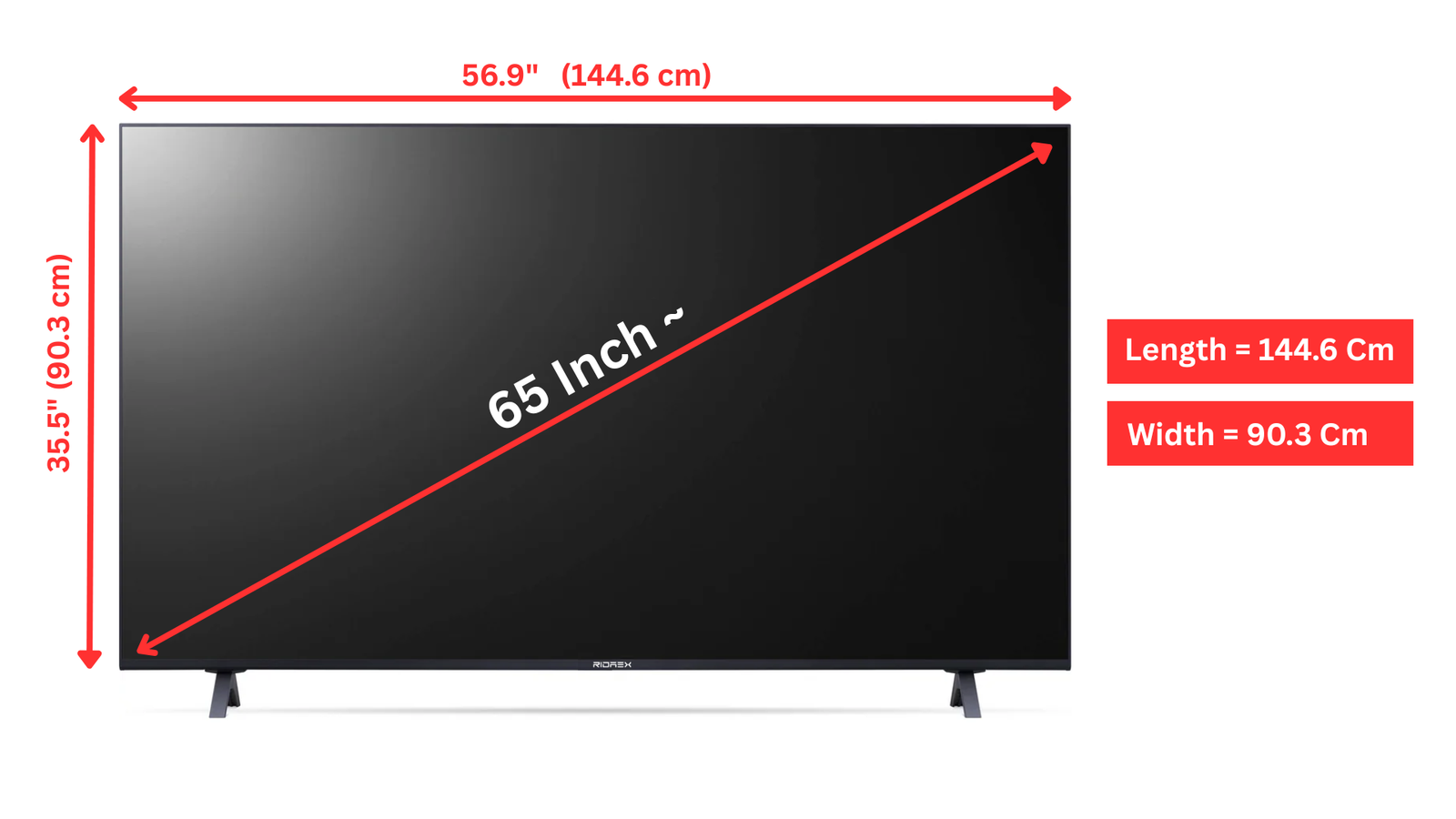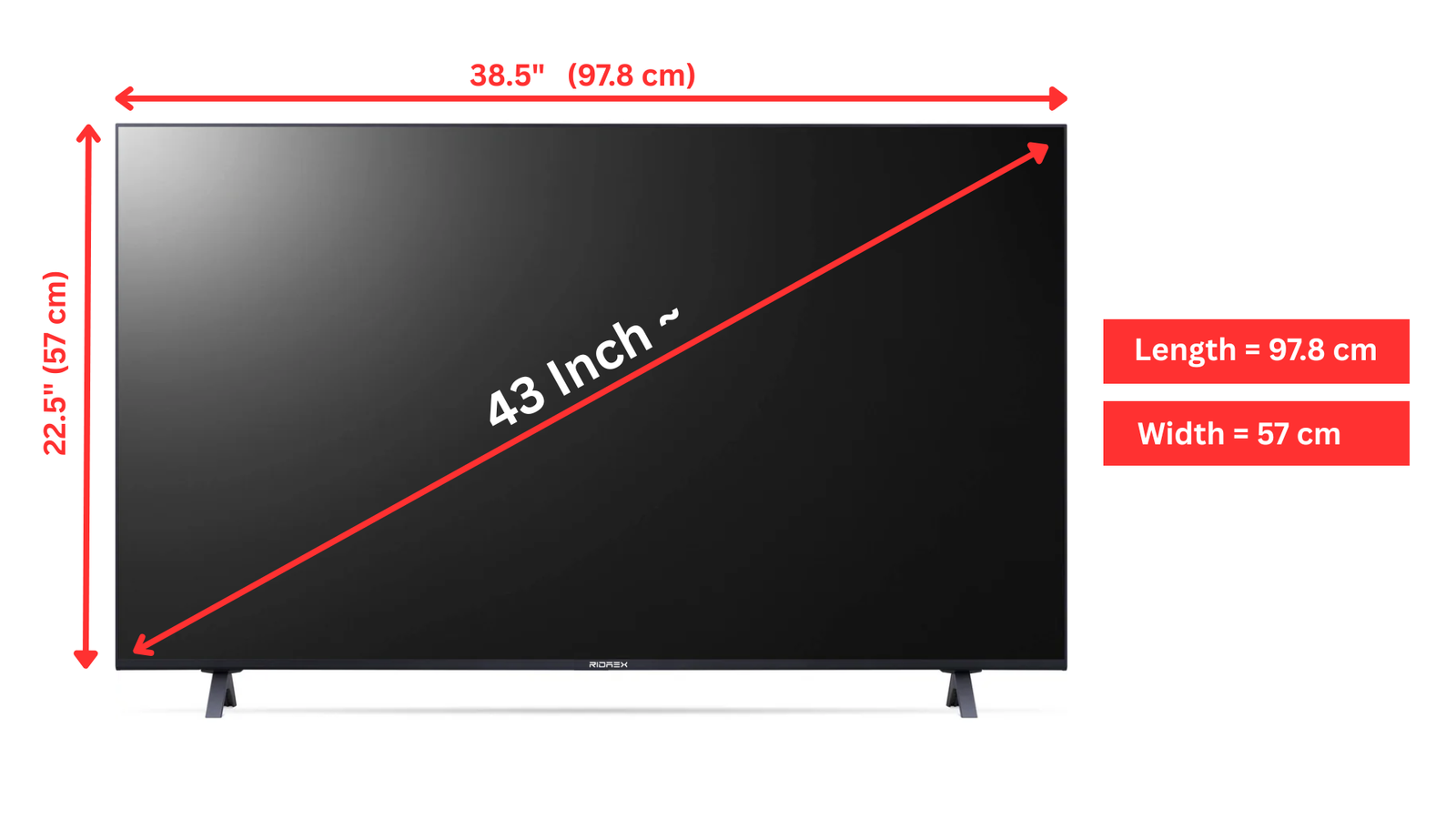A 65 inch TV is 56.9" wide x 35.5" tall without the stand. Discover the ideal viewing distance for an immersive...

Why 75-Inch TV's Commands a Premium Price over 65-Inch ?
Why does a 75-inch TV cost so much more than a 65-inch TV? Well, there are many reasons for this big price difference. These reasons include how it's made, new technology, how people like to buy things, and what people want. Let's look closer at why the 75-inch TV costs more:
1. Screen Size and Manufacturing Complexity:
→Larger Display Panel: The most prominent factor is the sheer size of the display panel in a 75-inch TV compared to a 65-inch TV, which requires more materials and intricate manufacturing processes.
→Precision Demands: Ensuring uniform image quality and colour accuracy across a larger screen demands more advanced engineering, calibration, and quality control measures, driving up manufacturing costs.
2. Advanced Display Technologies:
→Higher Resolution: Many 75-inch TVs feature higher resolutions, such as 4K or 8K, which require more advanced pixel technology and processing power. This contributes to increased manufacturing costs.
→Backlighting Innovation: Some larger TVs employ advanced backlighting technologies like full-array local dimming or OLED, enhancing contrast and picture quality. However, these technologies add to the overall cost due to additional components and manufacturing complexities.
3. Enhanced Features and Performance:
→Premium Visuals: The larger screen size allows for a more immersive viewing experience, encouraging manufacturers to incorporate better colour accuracy,
brightness, and motion handling, all of which contribute to higher costs.
→Audio Systems: Larger TVs often come with upgraded audio systems that provide a more cinematic experience, but these advanced sound technologies add to the overall price.
4. Research and Development:
→Technological Innovation: Developing larger panels, advanced image processing, and other features requires substantial research and development investments. These costs are reflected in the final price of the 75-inch TV.
5. Market Demand and Economies of Scale:
→Limited Demand: Larger TVs, like 75-inch models, cater to a niche market segment due to their higher prices and space requirements. The limited demand leads to lower production volumes, reducing potential cost-saving benefits from economies of scale.
6. Premium Brand Positioning:
→Flagship Models: Manufacturers often position their 75-inch TVs as flagship models, showcasing the pinnacle of their technology and design prowess. This positioning justifies higher prices for these premium offerings.
7. Special Handling and Shipping:
→Delivery Complexity: Due to their larger size and fragility, 75-inch TVs require specialized packaging, handling, and shipping procedures, leading to additional costs.
8. Target Consumer Segment:
→Luxury and Enthusiast Market: The 75-inch TV market segment typically targets enthusiasts and consumers seeking a high-end, immersive home theatre experience. Manufacturers capitalize on this by offering advanced features and premium quality, which come at a higher cost.
9. Energy Consumption:
→Higher Power Usage: Larger screens and more advanced technologies often result in higher energy consumption, adding to the overall operational cost of the TV.
In conclusion, the double cost of a 75-inch TV compared to a 65-inch TV is a result of a complex interplay of factors, including the larger screen size, advanced display technologies, enhanced features, market demand dynamics, and manufacturing intricacies. These elements collectively contribute to the higher price point of larger television models, catering to a specialized market seeking superior visuals and premium entertainment experiences.



















Leave a comment